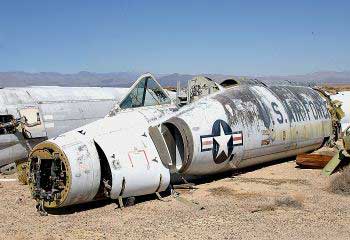

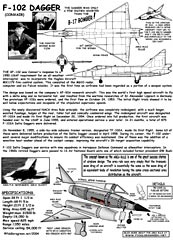
Convair F-102 Delta Dagger
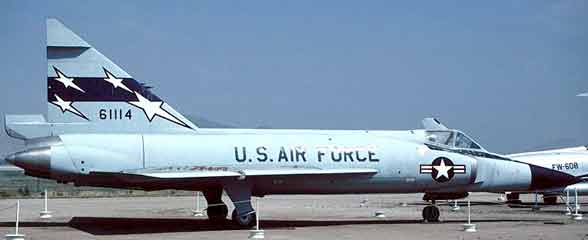
The F-102 was the world's first supersonic all-weather jet interceptor and the USAF's first operational delta-wing aircraft. Its primary mission was to intercept and destroy enemy aircraft. In a wartime situation, its electronic equipment would locate an enemy aircraft, then radar would guide the plane into position attack. Then, electronic fire control system would automatically fire the F-102's air-to-air rockets and missiles.
Convair's F-102 was to be the first supersonic delta-winged fighter, but it was discovered that the wind-tunnel predictions were wildly optimistic and it stubbornly refused to go supersonic. Panic ensued but salvation came in the form of the newly discovered 'area rule', which stated that minimum drag occurred when the fuselage was narrower adjacent to the wing. A lengthened F-102 with suitably placed bulges conformed to this principle and easily passed Mach 1 and formed the basis of the successful F-102A fighter. The need to modify the F-102 completely ruined the novel production plan, which called for series aircraft to be built on the same tooling as the prototype. In all, two-thirds of the 30,000 pieces of tooling purchased had to be discarded.
The first F-102A was handed over to the US Air Defense Command in 1955, but it was another year before the type was issued to squadrons. Production of the Delta Dagger ended in April 1958 after 875 aircraft had ben delivered, and several major modifications were subsequently made to update the machine's combat capability.
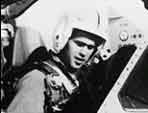 "...The former President, George W. Bush, was an F-102 pilot when he was in the Air National Guard. To recognize his service, the museum has placed the name "Lt George W. Bush" as pilot on the side of the plane...The museum's F-102A is serial number 56-1114 and entered the Air Force in May 1957. It was stationed with the 52nd Fighter Group at Suffolk County AFB, NY, the 79th Fighter Group, Youngstown, OH and the 1st Fighter Group, Selfridge AFB, MI. In December 1960, it transferred to the114th Fighter Group (ANG), Sioux Falls, SD and finally to the 114th Fighter Group (ANG), Fresno, CA."....Bob L.
"...The former President, George W. Bush, was an F-102 pilot when he was in the Air National Guard. To recognize his service, the museum has placed the name "Lt George W. Bush" as pilot on the side of the plane...The museum's F-102A is serial number 56-1114 and entered the Air Force in May 1957. It was stationed with the 52nd Fighter Group at Suffolk County AFB, NY, the 79th Fighter Group, Youngstown, OH and the 1st Fighter Group, Selfridge AFB, MI. In December 1960, it transferred to the114th Fighter Group (ANG), Sioux Falls, SD and finally to the 114th Fighter Group (ANG), Fresno, CA."....Bob L.
Obviously we can expect a "Mission Accomplished" S-3A Viking soon from Fiddler's Green. Add a diorama "island" of the USS Lincoln with a suitable banner draped on it. And a grandstand of cheering sailors. ...../V
I misunderstood and thought you had a 'fantasy' version of the F-102 as if Kerry had flown one - so I went into BOTH URL's because I didn't want to pass up any versions of the model. So, SUBTRACT 1 vote for BUSH - please! As to whether Kerry actually gets my vote - we'll see. The Bush citadel of mendacity is headed rapidly for a thermal runaway meltdown and he and his gang of pirates may make themselves so unelectable come November that the race could turn into a more or less honest contest between Kerry and Nader. You heard it here first. Thanks for all the great models!! .....Mark B
I'm not sure I like the political aspects of this. The way I vote is no one's business but my own, yet I'm forced to choose if I wish a copy of the aircraft. When did selling paper models become a political forum anyway? I'm not really concerned if George W. Bush or Chuck Yeager or Wrong-Way Corrigan flew the damn thing, I'm interested in the aircraft itself. You may think this is all in fun. I, for one, do not....Michael
The F-102 Bush-Kerry URL's thingie is a for-fun and totally anonymous poll and there is no way your name will be associated with it.. It is not political in any way- chip
With the national elections not too far away, please consider doing a "Democratic" version and a "Republican" version. The difference being the "Democratic" version would have an empty cockpit; the "Republican" version, a pilot figure waiving from inside the cockpit. Fiddlers Green - Political Pundits of Paper Modeling, yessir ;-). (Sorry - I got carried away.) There is a Brazilian Cardmodellers who has done a P-40 in Brazilian markings with a fold-up "box" of the cockpit with the printed side on the inside of the box. Perhaps FG could do the same for 43's mount......ymp, John
George Bush's Delta Dagger!! Whoopee!! Damn Chip, don't give that airplane such a stigma! It had enough trouble getting respect, and Bush only used it as a ploy to avoid real flying! Actually, the airplane did fill a perceived need in the air defense curtain, and I respect the guys who flew it from the alert pads in all kinds of weather. I'm sure glad I didn't have to. I flew the F-100 and F-101 in that time frame....Bob Hanson
I can't resist: George Bush's F-102? Will there be a pilot in it or not?? hehehe.....Jon in Louisville
Just wanted to say thanks for the F 102. It's a beauty. I will make a prediction here. I'll bet a dollar to a dime that Bush will win this little pole. People who love airplanes and airplane models will vote for him along with those intelligent enough to be able to use a pair of scissors or a sharp instrument without seriously injuring themselves. Marion P
It only seems fair to now do a model of a Vietnam Patrol Boat for Kerry fans. In the post-Florida election days, I'm curious about your methodology. If I download the large (4 sheets) AND regular (2 sheets), does that count as 1, 2, or 6 votes? Thanks, these polls are fun! David C
Convair F-102 Delta Dagger
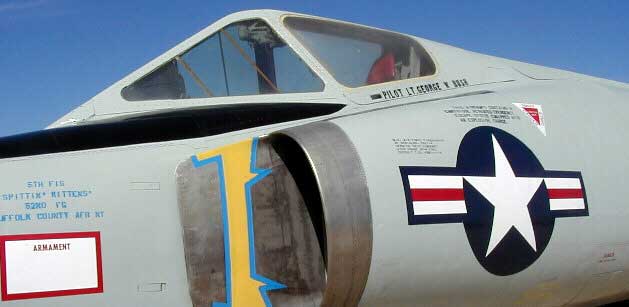
The primary mission of the F-102 was to intercept and destroy enemy aircraft. It was the world's first supersonic all-weather jet interceptor and the USAF's first operational delta-wing aircraft. The F-102 made its initial flight on Oct. 24, 1953 and became operational with the Air Defense Command in 1956. At the peak of deployment in the late 1950's, F-102s equipped more than 25 ADC squadrons. Convair built 1,000 F-102s, 875 of which were F-102As. The USAF also bought 111 TF-102s as combat trainers with side-by-side seating.
In a wartime situation, after electronic equipment on board the F-102 had located the enemy aircraft, the F-102's radar would guide it into position for attack. At the proper moment, the electronic fire control system would automatically fire the F-102's air-to-air rockets and missiles.
The F-102 project was in serious trouble, and if a fix for the performance problems could not be found, the entire project was in danger of cancellation.
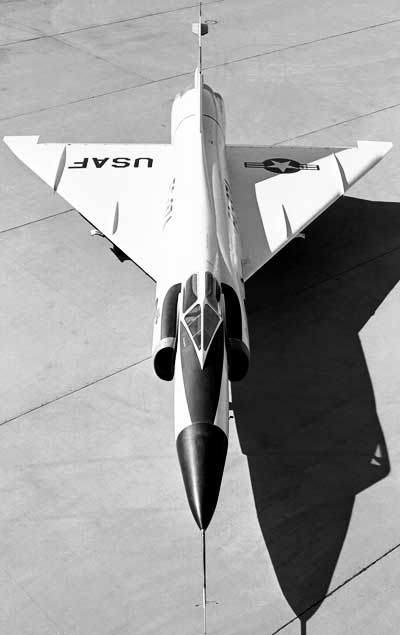 While eight more YF-102s (Model 8-82, serials 53-1779/1786)
were being built to the same standards as the first two aircraft,
Convair embarked on a major investigation and redesign program
in an attempt to save the F-102. The salvation of the project
turned out to be in the "area rule" devised by NACA
scientist Richard Whitcomb. According to the area rule, the total
cross sectional area along the direction of flight should be a
constant in order to achieve minimum transonic drag. In order
to achieve this, it was required that the fuselage be narrowed
down in the region where the wing roots were attached, then broadened
back out again when the wing trailing edge was reached.
While eight more YF-102s (Model 8-82, serials 53-1779/1786)
were being built to the same standards as the first two aircraft,
Convair embarked on a major investigation and redesign program
in an attempt to save the F-102. The salvation of the project
turned out to be in the "area rule" devised by NACA
scientist Richard Whitcomb. According to the area rule, the total
cross sectional area along the direction of flight should be a
constant in order to achieve minimum transonic drag. In order
to achieve this, it was required that the fuselage be narrowed
down in the region where the wing roots were attached, then broadened
back out again when the wing trailing edge was reached.
This gave the aircraft fuselage a characteristic "wasp-waist" or "Coke-bottle" shape. In order to achieve this, the length of the fuselage was increased by 11 feet, and a pair of aerodynamic tail fairing's were added aft of the trailing edge, these fairing's extending beyond the end of the afterburner tailpipe in a pair of characteristic protrusions. These tail fairing's were for purely aerodynamic purposes and had no other function. A new cockpit canopy with a sharper leading edge was fitted, although it had an adverse effect on overall visibility. Cambered leading edges were fitted to the thin delta wings to improve the behavior of the thin airfoil at high angles of attack, and the wingtips were given wash-in.
A J57-P-23 engine was fitted, which was considerably lighter and more powerful than the previous J57-P-11. The J57-P-23 engine was rated at 11,700 lb.s.t. dry and 17,200 lb.s.t. with after burning. The aircraft was lightened by reducing excess structures no longer required by the lighter engine. The new aircraft was given the designation YF-102A.
Designated Model 8-90, the first of four YF-102As (53-1787/1790) was rolled out at San Diego just 117 days after redesign had started. It was trucked out to Edwards AFB and took off on its maiden flight on December 20, 1954.
On the next day, Mach 1 was easily exceeded, fully confirming the predictions of the area rule. It soon reached a top speed of Mach 1.2 in level flight. In addition, the aircraft could still keep on climbing after reaching 51,600 feet.
A milestone was reached on July 8, 1955, when a YF-102A fired six Falcon missiles and 24 unguided rockets in less than 10 seconds.
The retooling required by the changes in the YF-102A played havoc with the Cook-Craigie plan for early production. Fully two-thirds of the 30,000 tools that had been purchased had to be thrown out and new ones acquired. Following the costly re-tooling procedure, full production of the F-102A began at the Convair plant in San Diego. The first production Model 8-10 or F-102A (53-1791) flew on June 24, 1955 and was delivered to the Air Force five days later. It had a J57-P-23 engine.
In the full production F-102A, the wings were moved aft, and fuselage length was increased by more than 16 feet over the original YF-102. The wingspan was increased from 37 feet to 38 feet 1 1/2 inches, the wing area increased from 661 square feet to 695 square feet, and the gross weight increased from 26,404 pounds to 28,150 pounds.
The initial production run of 40 aircraft (production blocks -5 through -25) were all employed in research and development work, and none entered operational service with the USAF. As a result of the tests, some significant airframe changes were made, including a three-foot addition to the height of the tail fin. This new tail fin was devised as a cure for some high-speed instability problems that had turned up during flight testing and was first tested in December of 1955. It was introduced as standard on all F-102As built after the 25th example, and earlier F-102As were retrofitted with this new taller fin.
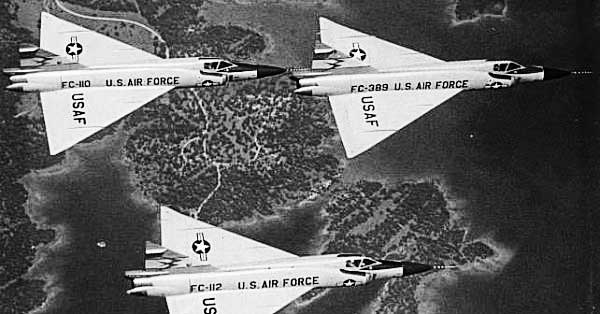
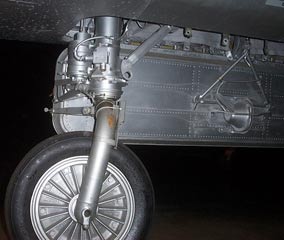 The first delivery to an operational Air Defense Command unit
(the 327th Fighter Interceptor Squadron based at George AFB in
California) took place on May 1, 1956, three years later than
originally expected. The 327th FIS was activated on August 18,
1955, initially equipped with F-86Ds. In mid-1956, it was decided
that only the 2.75-inch FFARs would be used as backups to the
Falcon missiles.
The first delivery to an operational Air Defense Command unit
(the 327th Fighter Interceptor Squadron based at George AFB in
California) took place on May 1, 1956, three years later than
originally expected. The 327th FIS was activated on August 18,
1955, initially equipped with F-86Ds. In mid-1956, it was decided
that only the 2.75-inch FFARs would be used as backups to the
Falcon missiles.
Earlier F-102s were retrofitted in the field and exchanged their T-214 2-inch FFARs for the 2.75-inch FFARS. Some 170 F-102s were modified according to this standard. In May of 1956, a Douglas MB-1 Genie nuclear-capable unguided rocket was fired from a YF-102A. For a while, the Air Force considered equipping the F-102A with the Genie rockets, but this project was abandoned in early 1957.
Early F-102As had been plagued by landing gear failures. By November of 1957, all F-102As had been fitted with serviceable struts and a new oleo strut metering pin and the side brace boss bearing of the landing gear was modified. In addition, a fix had been found for the in-flight failures of the speed brakes mounted behind the vertical fin.
The popular name Delta Dagger for the F-102A was chosen in 1957. Between 1952 and 1957, five production contracts were awarded for a total of 875 F-102As. The MG-3 fire-control system was replaced in the field by the improved MG-10 in most F-102As. More sophisticated and less troublesome versions of the Falcon air-to-air missile were fitted as they became available.
Conversions were later performed which made the F-102A capable of launching the GAR-11 (later redesignated AIM-26A) nuclear-tipped Falcon. Ensuing modifications eventually made it possible to interchangeably carry AIM-26 and AIM-4 (GAR-1 through GAR-4 in pre-1962 designation schemes) Falcons in the central weapons bay.
In October of 1957, a new wing was introduced on the production line beginning with approximately the 550th F-102A. This innovation raised combat ceiling to 55,000 feet (a 5000-foot increase) and raised maximum speed at 50,000 feet to Mach 1. In addition, maneuverability was substantially improved and low-speed stability was markedly enhanced.
in 1957, Convair began a modernization program for early F-102As to bring them up to the latest standards. These changes included a larger tail, an MG-10 fire control system in place of the MG-3, attachment points for a pair of 230 US gallon under wing drop tanks, and provision for 2.75-inch unguided rockets in place of the 2-inch rockets originally carried. When the under wing tanks were carried, however, the F-102A was limited to subsonic performance.
By the end of 1958, 26 ADC squadrons were flying F-102As, and
the F-102A had replaced the North American F-86D Sabre as the
most numerous interceptor with the ADC. F-102As in service numbered
627, or about half of the total number of interceptors operated
by the Air Defense Command. At the height of its service, 32 ADC
units flew the F-102A. The last of 873 F-102As produced (serial
number 57-909) was delivered in September of 1958.
A subsequent in-service modification program added an infrared sighting system for target acquisition, lock-on and completion of run. The infrared scanner was mounted in a transparent dome immediately in front of the pilot's windshield.
The internal unguided rocket armament was deleted, and provisions were made for the carrying of later marks of the Falcon AAM such as the AIM-4E radar homer and the AIM-4F infrared homer.
Most of the F-102As were stationed stateside as interceptors for the Air Defense Command. However, a few were sent overseas. The first overseas deployment of the F-102A took place in June of 1958 when the 327th Fighter Interceptor Squadron moved to Thule, Greenland.
The first squadron in Europe to receive the F-102 was the 525th FIS based at Bitburg in West Germany, which received 25 aircraft in early 1959. Five other squadrons based in Germany, Spain, and the Netherlands eventually got Delta Daggers.
A few Pacific-based squadrons got F-102s, the first being the 16th FIS based at Naha AFB on Okinawa which re-equipped in March of 1959. It was in the Pacific theatre that the F-102 was to achieve its only taste of combat.
Aircraft from the 590th Fighter Interceptor Squadron were transferred to Tan Son Nhut AFB near Saigon in South Vietnam in March of 1962 to provide air defense against the unlikely event that North Vietnamese aircraft would attack the South. F-102As continued to be based there and in Thailand throughout much of the Vietnam war. F-102As stood alert at Bien Hoa and Da Nang in South Vietnam and at Udorn and Don Muang in Thailand. The F-102A was finally withdrawn from Southeast Asia in December of 1969.
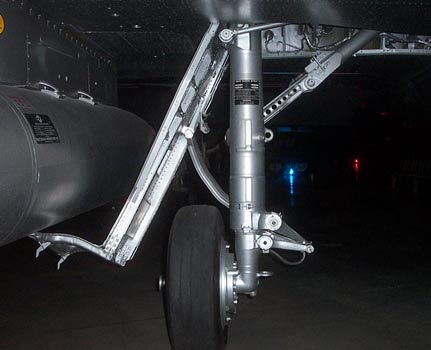 The F-102A established an excellent safety
record in Vietnam. In almost ten years of flying air defense and
a few combat air patrols for SAC B-52s, only 15 F-102As were lost.
Although a few missions were flown over North Vietnam, the Southeast
Asia-stationed F-102As are not thought to have actually engaged
in air-to-air combat.
The F-102A established an excellent safety
record in Vietnam. In almost ten years of flying air defense and
a few combat air patrols for SAC B-52s, only 15 F-102As were lost.
Although a few missions were flown over North Vietnam, the Southeast
Asia-stationed F-102As are not thought to have actually engaged
in air-to-air combat.
However, one F-102A of the 509th FIS was lost to an air-to-air missile fired by a MiG-21 while flying a CAP over Route Package IV on February 3, 1968. Two F-102As were lost to AAA/small arms fire and four were destroyed on the ground by the Viet Cong and eight were lost in operational accidents.
Strange as it may seem, the F-102A actually did fly some close-support missions over the South, even though the aircraft was totally unsuited for this role. These operations started in 1965 at Tan Son Nhut using the 405 FW alert detachment.
Operating under the code-name "Project Stovepipe", they used their heat sinking Falcon missiles to lock onto heat sources over the Ho Chi Minh trail at night, often Viet Cong campfires.
This was more of a harassment tactic than it was serious assault. They would even fire their radar-guided missiles if their radars managed to lock onto something. The pilots were never sure if they actually hit anything, but they would sometimes observe secondary explosions.
The F-102s soon switched to a day role, firing the 12 unguided FFAR rockets from the missile bays, using the optical sight. 618 day sorties were flown, the last one being flown at the end of 1965. One F-102A was downed by ground fire during one of these rocket attacks. There were some later missions flown, especially in Mayday emergencies when the 102's were the fastest response available in the South (2 1/2 minutes over the fence, far faster than the F-4).
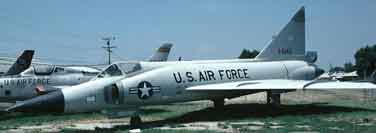 During the early 1960s, the F-102A was gradually
replaced in the ADC by the McDonnell F-101B Voodoo and the Convair
F-106 Delta Dart. By mid-1961, the number of F-102As in service
with the ADC was down to 221. However, by the end of 1969, with
the exception of a squadron maintained in Iceland, all ADC F-102As
had been transferred to the Air National Guard. The F-102As stationed
in the Pacific had been withdrawn in December of 1969.
During the early 1960s, the F-102A was gradually
replaced in the ADC by the McDonnell F-101B Voodoo and the Convair
F-106 Delta Dart. By mid-1961, the number of F-102As in service
with the ADC was down to 221. However, by the end of 1969, with
the exception of a squadron maintained in Iceland, all ADC F-102As
had been transferred to the Air National Guard. The F-102As stationed
in the Pacific had been withdrawn in December of 1969.
The only F-102As still in service with the USAF at the beginning of 1970 were all stationed overseas. At that time, the USAF still retained a few F-102A squadrons in Germany and the Netherlands. In the early 1970s, European-based F-102As were replaced by F-4 Phantoms. By the end of June 1973, the number of active F-102As had been reduced to ten.
The last ADC unit to operate the F-102A, the 57th FIS based at Keflavik in Iceland finally traded in its F-102As for McDonnell F-4C Phantoms in mid-1973. As they left USAF service, most F-102As were transferred to the Air National Guard. First to receive the F-102A was the 182nd FIS of the Texas ANG, receiving the plane in mid-1960.
By 1966, ANG inventories amounted to 339 F-102As.
Twenty-three ANG units ultimately got F-102As, including ANG squadrons
of Louisiana, Florida, Texas, North Dakota, Hawaii, Pennsylvania,
New York, Washington, Connecticut, Oregon, Maine Vermont, Tennessee,
Arizona, South Carolina, South Dakota, Wisconsin, Minnesota, Montana,
Idaho, and California. A 1967 proposal to modify F-102As into
RF-102As as the standard ANG reconnaissance aircraft was deemed
infeasible and was not proceeded with.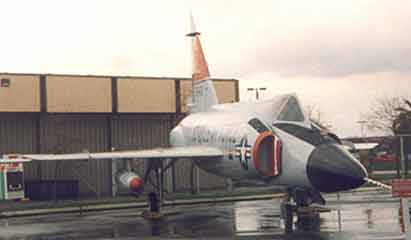
The F-102A was not equipped at the factory for midair refueling. However, there were some examples of the F-102A that were fitted in the field with probe and drogue inflight-refuelling probes mounted immediately aft of the cockpit on the right-hand side of the fuselage. These were fitted for the purpose of ferrying aircraft from the US to Southeast Asia. The probes were removed upon arrival. Some ANG F-102As were also fitted with these midair refueling probes.
In the late 1960s, Convair proposed a close air support version of the F-102 equipped with an internally-mounted cannon. The USAF was not particularly interested and this idea got no further than the preliminary planning stage. Large-scale retirement of the F-102A from the ANG began in late 1969 and continued throughout the 1970s.
The last F-102A finally left ANG service in October of 1976, when the 199th FIS of the Hawaii ANG traded in their Delta Daggers for F-4C Phantoms. Most of the retired F-102As ended up in the bone yards at the Davis-Monthan AFB storage facility. Many were subsequently converted into remote-controlled drone aircraft.
Specification of Convair F-102A Delta Dagger:
Engine: One Pratt & Whitney J57-P-23 turbojet, 10,200 lb.s.t. dry and 16,000 lb.s.t. with after burning, or a J57-P-25, 11,700 lb.s.t. dry and 17,200 lb.s.t. with after burning. Performance: Maximum speed: 825 mph at 35,000 feet (Mach 1.25). Initial climb rate: 13,000 feet per minute. An altitude of 51,800 feet could be attained in 9.9 minutes.
Combat ceiling was 51,800 feet and service ceiling was 53,400 feet. Maximum range was 1350 miles. Weights were 19,350 pounds empty, 24,494 pounds combat weight, 28,150 pounds gross, and 31,500 pounds maximum takeoff. Dimensions: wingspan 38 feet 1 1/2 inches, length 68 feet 4 1/2 inches, height 21 feet 2 1/2 inches, wing area 695 square feet. Maximum internal fuel load was 1085 US gallons.
In later versions, two 430 US-gallon under wing tanks could be carried, bringing total fuel capacity to 1945 US gallons. Armament: Armament consisted of six air-to-air guided missiles housed internally in a ventral weapons bay--usually a mixture of three Hughes AIM-4A or -4E Falcon semi active radar-homing missiles and three Hughes AIM-4C or -4F Falcon infrared homing missiles.
Later installations included three Falcons plus one AIM-26A or B In addition, twenty-four 2.75-inch unguided FFARs could be carried in launching tubes mounted inside the weapons bay doors. In later versions, the unguided rockets were often omitted.
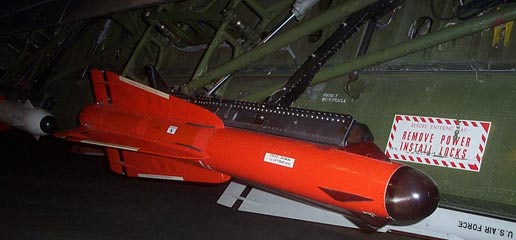
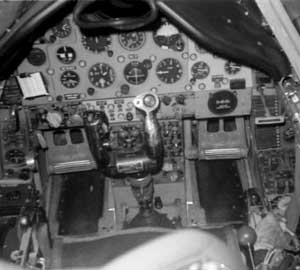 |
Cockpit of the Convair F-102 Delta Dagger. |
Specifications for the Convair F-102 Delta Dagger
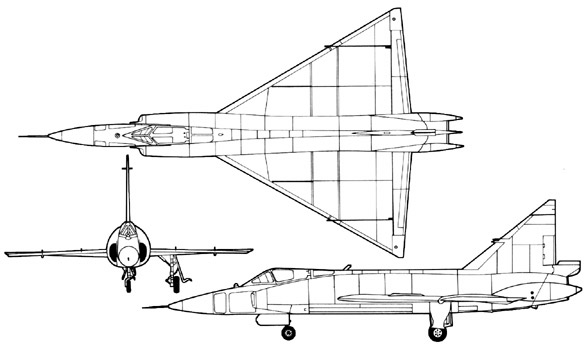 |
Span: 38 ft. 1 in. Armament |
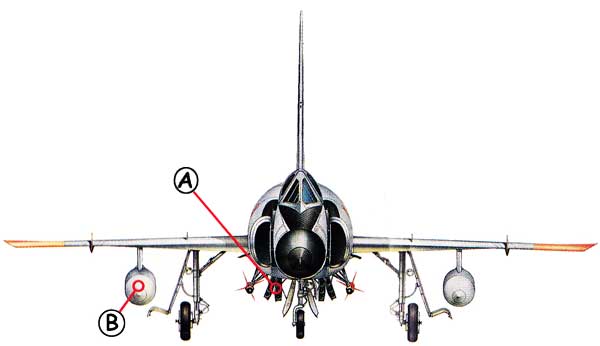 |
|
| A: In addition to the Falcon missiles, the F-102 carried 25 unguided rockets. | B: The addition of drop- tanks gave the F-l 02 greatly increased range. lt could now make ferry flights of over 1,250 miles. |
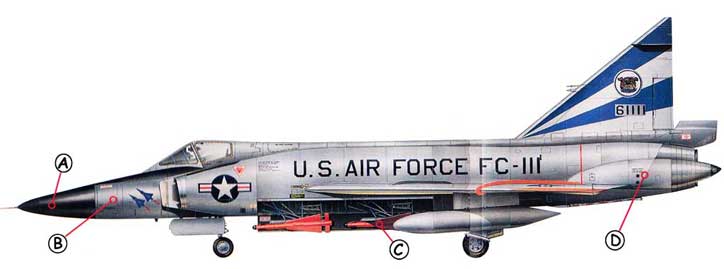 |
|||
| A: The radar component of the Hughes MG-10 fire-control system could track several airborne targets simultaneously at ranges of up to 30 miles, and lock on individual aircraft around 15 miles. | B: Most F-102s wore this gull gray camouflage, although some adopted a green and brown scheme for service in the Vietnam War. | C: Putting weapons in an internal bay was a vital factor in the F-102's blistering performance. If they had been on the outside pylons, the drag would have been too much. | D: The first F-102 design was disappointing in service and was revised to incorporate "area rule". |
